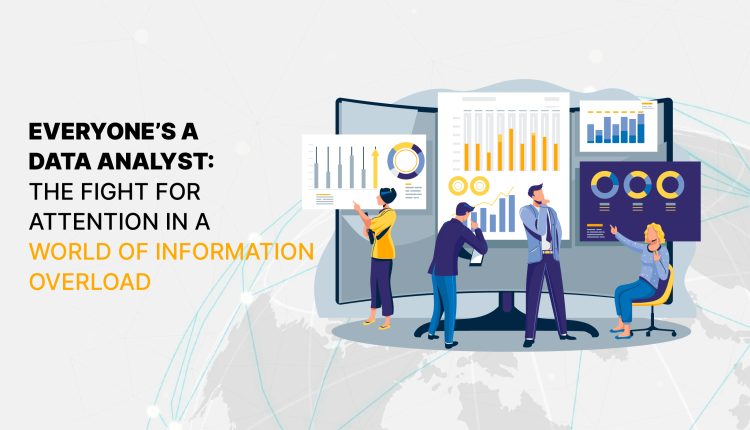The marketing industry is obsessed with data, and for good reason. With a proliferation of marketing channels, media messages and products, marketers need to constantly harvest, analyze and apply large pools of data to run their business. But amongst all the number crunching, we can’t forget what those data points represent: real human beings, each making sense of the world with their own built-in organic supercomputer.
This gets harder by the year as our brains are flooded by more and more information. A study by the University of California estimated that the average American consumes 12 hours of information and 34 gigabytes of media daily, growing at an annual rate of 5.4% per year to 2008. Assuming that growth has kept pace (and it certainly feels like it has), average daily media consumption in 2022 is around 60 gigabytes.
Even a supercomputer finds that much data overwhelming, so the brain is highly selective in what it keeps. Of the 11 million bits per second transmitted by our senses, only around 50 are consciously processed, with the brain doing a spectacular amount of “compression” processes in the background to filter the noise down to what’s important to us.
And there lies the challenge marketers face today: how do we convince the brains of consumers that our messages are worth paying attention to in a media ecosystem that keeps them at capacity?
Also Read: How Marketing Analytics Makes Way To Empower Sales Funnel In Business
Turning big data toward a single target
In marketing, data has traditionally been used to simplify human behaviour and characteristics into handy charts and graphs that tell us whether a campaign is hitting its targets and what audiences are worth targeting. The actions of thousands upon thousands of consumers are reduced to a few percentage points, sacrificing detail for scale. When the industry tried to get more specific details, it did so by over-relying on personal information, leading to a data privacy crackdown.
If we really want to understand the Huan Brain Supercomputer, we need a supercomputer to understand it. Machine learning and AI help marketers build models that rapidly process trillions of data points and recognize & respond to human behavioural signals in real-time. Instead of trying to attempt to understand huge groups of people at once, we can use computing power to understand one person at a time and scale that learning across the open web.
Through this approach, we finally have a reliable method of measuring the holy grail of marketing metrics: attention. By measuring and optimising for when each individual consumer is most attentive, brand messages are more likely to be processed by their conscious minds rather than being filtered out as media noise.
The AI-powered attention revolution
Until recently, the technology required to accurately measure real-time attention didn’t exist, but now advertisers can gain an intimate understanding of consumer attention in a privacy-safe way. Because actions speak louder than attributes, real-time contextual and attention targeting and optimisation offers far greater precision than can be achieved with broad audience profiles or retrospective analysis.
By analysing signals generated by a person’s device (these days, most likely a smartphone), the device effectively becomes a proxy for their behaviour. Tilts, taps, scrolls, hovers, location, local weather, and more can be monitored in real-time to accurately estimate the user’s attention level, helping advertisers avoid instances where an ad is “viewed” but doesn’t make an actual impression.
Contextual attention metrics can also be used for real-time on-page optimisation, updating the creative content and format of an advert on the fly to fit into the inventory most appropriate for the advertiser’s KPIs. Every stage of the programmatic exchange is enhanced, allowing buyers to target high attention slots while sellers can gauge the true value of their inventory.
Consumers win too receiving fewer messages that are more relevant to what they need and want at the moment. As real-time attention monitoring is implemented industry-wide, consumers will only be shown adverts when they’re in the right mental state to receive them — providing some much-needed relief in the world of information overload.


Comments are closed.